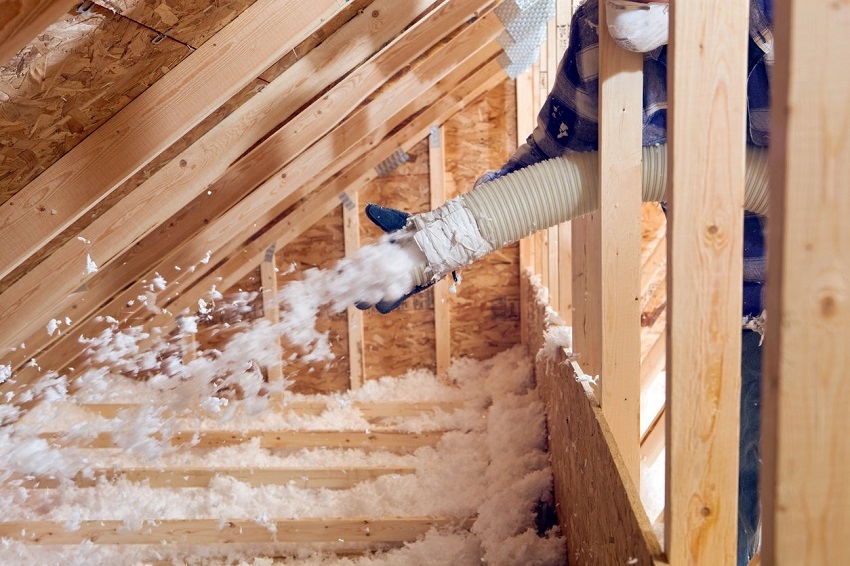Are you tired of shivering during winter and sweating profusely in the scorching heat of summer? Well, worry no more! Insulation is the key to maintaining a comfortable temperature inside your house all year round. In this article, we will explore the different types of insulation used in older houses. From traditional materials to more modern alternatives, we will delve into the pros and cons of each. So, let’s embark on a journey through time and discover the old types of insulation for houses.
Before diving into the world of old insulation types, let’s understand why insulation is crucial for a comfortable living environment. Insulation acts as a barrier, preventing heat transfer between the inside and outside of a house. It helps maintain a consistent temperature, reduces energy consumption, and enhances overall energy efficiency. In older houses, various insulation materials were used, each with its own unique properties and considerations.
Fiberglass Insulation: A Time-Tested Classic
Fiberglass insulation, one of the most common types of insulation found in older homes, has stood the test of time. It is made from tiny glass fibers and comes in batts or rolls. Fiberglass insulation is affordable, easy to install, and provides good thermal performance. However, it can cause skin irritation if proper precautions are not taken during installation.
Cellulose Insulation: Harnessing the Power of Nature
Cellulose insulation is an eco-friendly option made from recycled paper products. It is treated with fire-retardant chemicals and blown into wall cavities or attics. Cellulose insulation excels at reducing air infiltration and provides excellent soundproofing capabilities. However, it may settle over time, reducing its effectiveness.
Mineral Wool Insulation: Heat Resistance at its Best
Mineral wool insulation, also known as rock wool or slag wool, is made from natural or synthetic minerals. It is fire-resistant, moisture-resistant, and offers superb thermal insulation. Mineral wool insulation is commonly found in older houses due to its durability and resistance to pests. However, it can be heavier and more expensive than other insulation options.
Vermiculite and Perlite Insulation: Lightweight Solutions
Vermiculite and perlite insulation were popular choices in the past, known for their lightweight properties. Vermiculite is a natural mineral that expands when heated, while perlite is volcanic glass that expands in a similar manner. Both materials provide decent insulation but may contain asbestos, which poses health risks.
Reflective Foil Insulation: The Barrier to Radiant Heat
Reflective foil insulation is designed to combat radiant heat transfer. It consists of a reflective surface, often aluminum, which reflects radiant heat away from the house. Reflective foil insulation is commonly used in attics and can be installed alongside other insulation materials. However, it is less effective in colder climates where conductive heat loss is a primary concern.
Natural Fiber Insulation: An Eco-Friendly Choice
Natural fiber insulation, such as cotton, wool, and hemp, provides an environmentally friendly alternative to synthetic materials. These fibers are treated with fire-resistant chemicals and offer good thermal performance. Natural fiber insulation is safe to handle and can be an excellent option for those concerned about chemical exposure. However, it may be more expensive than other insulation types.
Spray Foam Insulation: Modern Versatility
Spray foam insulation is a popular choice in modern construction but can also be found in older houses. It is applied as a liquid that expands and hardens into a foam, filling gaps and creating an airtight seal. Spray foam insulation offers excellent thermal resistance and helps prevent air leakage. However, it requires professional installation and may release harmful fumes during application.
The Challenges of Old Insulation: Asbestos and Lead
While old types of insulation have their merits, it’s essential to address the potential health hazards associated with some materials. Asbestos was commonly used in insulation before its harmful effects were widely recognized. If your house was built before the 1980s, asbestos-containing insulation is possible. Similarly, lead-based paint and lead pipes were used in older homes, posing health risks if disturbed during renovation or demolition. It is crucial to consult professionals when dealing with these potential hazards.
Upgrading Old Insulation: Why and How
If you have an older house with outdated insulation, upgrading to modern alternatives can bring numerous benefits. Newer insulation materials provide improved thermal performance, energy efficiency, and safety. To upgrade your insulation, start by assessing your home’s current insulation and identifying areas that need improvement. Consult with insulation professionals to determine the best insulation options for your needs.
Conclusion
In conclusion, understanding the old types of insulation used in houses can provide valuable insights for homeowners. Each type has advantages and considerations, from fiberglass and cellulose to mineral wool and spray foam. When dealing with older insulation, addressing potential health hazards like asbestos and lead is important. Upgrading old insulation can enhance energy efficiency, comfort, and overall well-being within your home.
FAQs
Q1: Can I install new insulation over the old insulation?
Yes, in most cases, you can install new insulation over the existing insulation. However, it’s essential to assess the condition of the old insulation and ensure it is not compromised or damaged.
Q2: How do I identify if my insulation contains asbestos?
Identifying asbestos-containing insulation requires professional testing. Consult with experts specializing in asbestos inspection and removal to ensure your safety.
Q3: Is it worth upgrading the insulation in my older house?
Yes, upgrading the insulation in your older house can significantly improve energy efficiency, reduce heating and cooling costs, and enhance overall comfort.
Q4: Can I remove old insulation myself?
Removing old insulation, especially if it contains asbestos is not recommended. Consult with professionals with the expertise and equipment to safely remove and dispose of hazardous insulation materials.
Q5: How often should insulation be replaced?
Insulation typically has a long lifespan but may need replacement if it becomes damaged, deteriorates, or loses effectiveness. Consult with insulation experts to determine if replacement is necessary for your specific situation.




